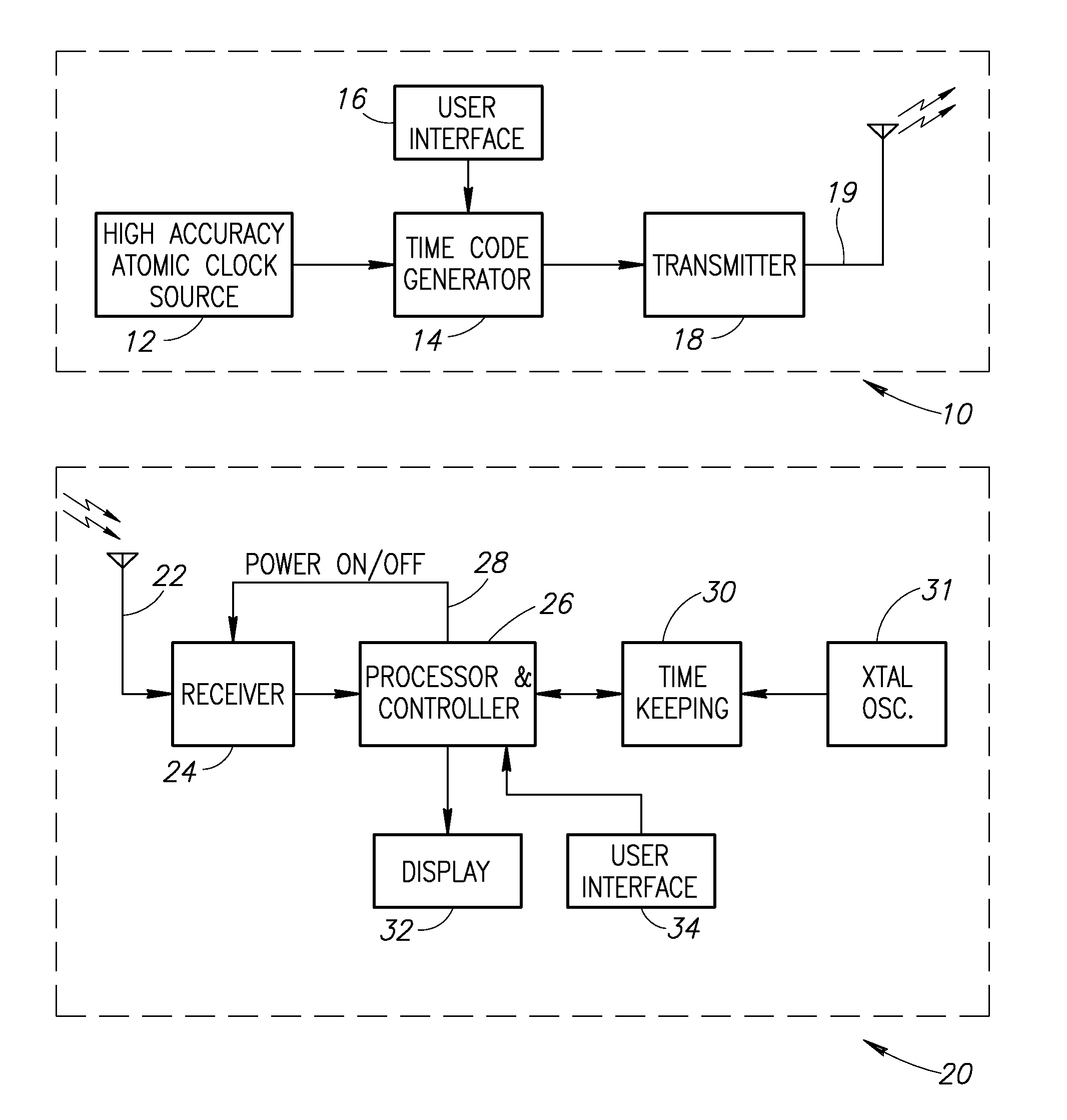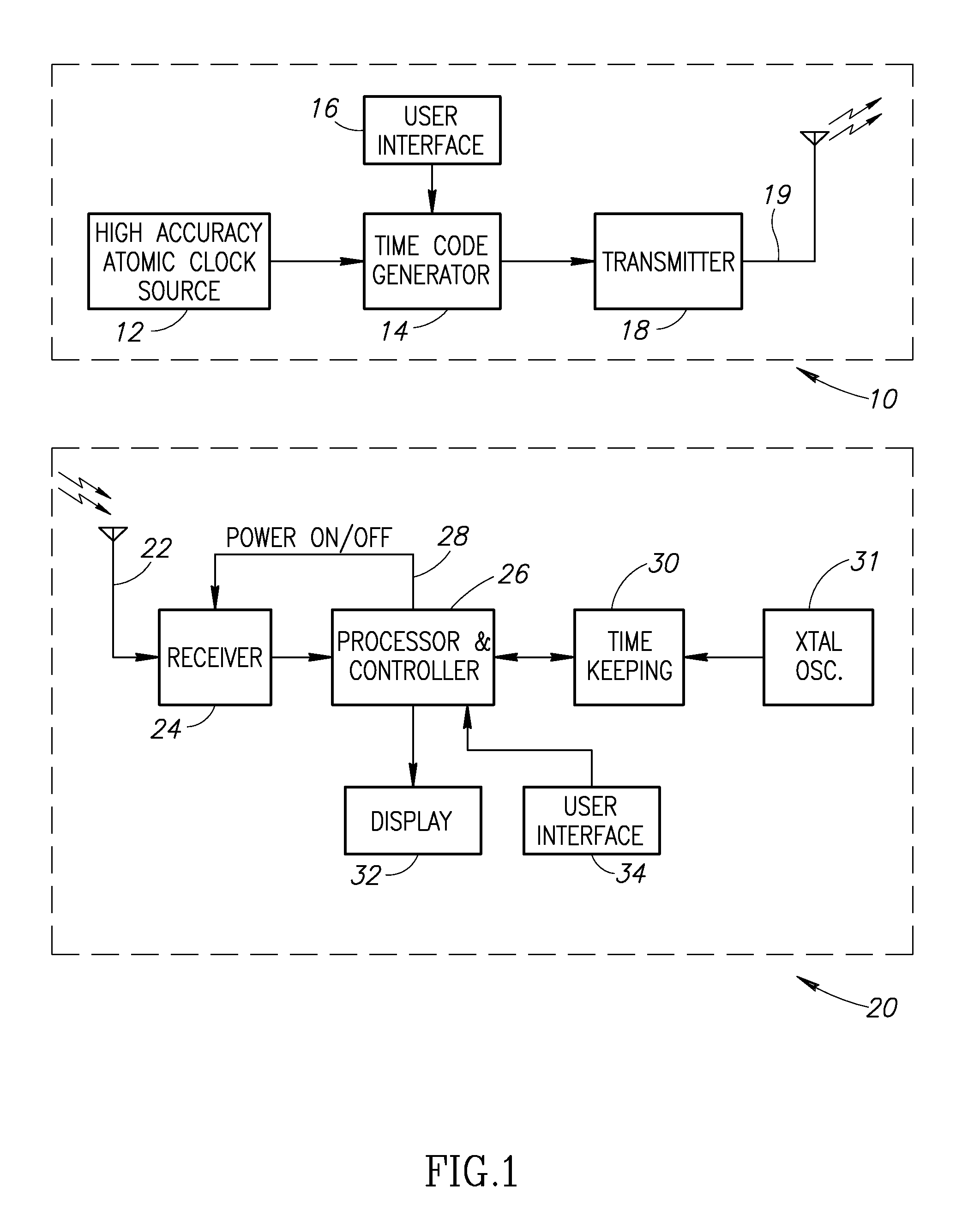Low Power Radio Controlled Clock Incorporating Independent Timing Corrections
a radio controlled clock and independent technology, applied in the field of wireless communication, can solve the problems of inaccuracy, few parts per million (ppm) to 20 ppm, and wide availability of low-cost crystals, and achieve the effects of reducing duty cycles, shortening battery life, and minimizing the energy associated with wireless reception
- Summary
- Abstract
- Description
- Claims
- Application Information
AI Technical Summary
Benefits of technology
Problems solved by technology
Method used
Image
Examples
Embodiment Construction
[0028]A block diagram illustrating an example high-level description of a system operating in accordance with the present invention is shown in FIG. 1. The equipment at the transmitter end, generally referenced 10, comprises a high accuracy frequency source 12 from which a clock signal is derived, a time-code-generator 14 having user-interface 16, a transmitter 18 and a transmitting antenna 19.
[0029]The time code generator 14 keeps track of time based on the high-accuracy frequency source input to it from source 12, constructs the frames of data representing the time information and other information that is to be transmitted, modulates the data frames onto the RF carrier in accordance with protocol of the present invention and allows time initialization and other controls to be set in it through its user interface 16. The transmitter 18 amplifies the modulated signal to the desired levels, e.g., 50 kW, and drives the antenna 19 that is used for the wide-coverage omnidirectional bro...
PUM
 Login to View More
Login to View More Abstract
Description
Claims
Application Information
 Login to View More
Login to View More - R&D
- Intellectual Property
- Life Sciences
- Materials
- Tech Scout
- Unparalleled Data Quality
- Higher Quality Content
- 60% Fewer Hallucinations
Browse by: Latest US Patents, China's latest patents, Technical Efficacy Thesaurus, Application Domain, Technology Topic, Popular Technical Reports.
© 2025 PatSnap. All rights reserved.Legal|Privacy policy|Modern Slavery Act Transparency Statement|Sitemap|About US| Contact US: help@patsnap.com



